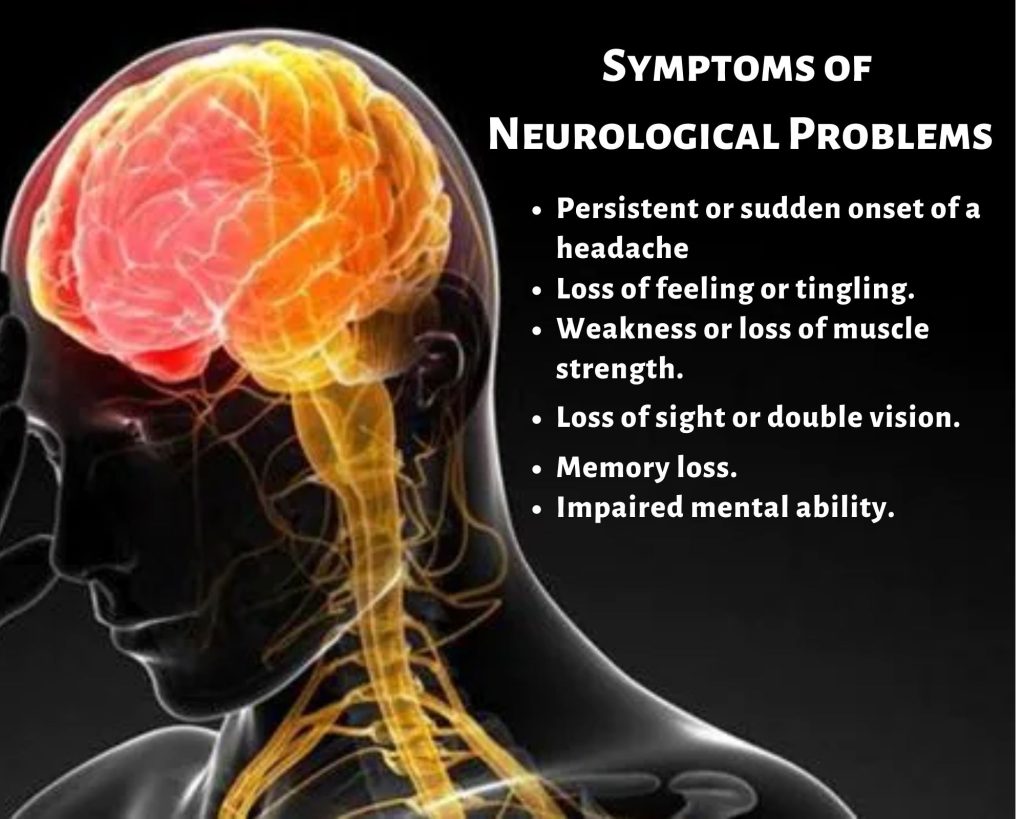Are you worried about neurological problems such as Alzheimer’s or Parkinson’s disease? Or if you’re concerned about memory loss? You might want to consider these signs. They could mean a problem that needs medical attention. Neurological conditions affect millions of Americans every year. A 2021 survey in the US found that 31% of students had anxiety or a similar disorder at some point in their life. Luckily! early detection can prevent serious health issues from developing. Learn more about symptoms of neurological disorders from Ruham Nasany below.
6 Symptoms of Neurological Problems.
What are some signs of neurological problems? What should you look out for? Here Ruham explains some of the most common signs of neurological disorders.
-
Persistent or sudden onset of a headache.
There are lots of reasons why you might experience headaches. Some of which are harmless. While others can indicate serious health problems. If you suspect a neurological problem. It’s important to seek medical attention immediately.
Headaches are common symptoms of diseases like brain tumours, stroke, multiple sclerosis, etc.
-
Loss of feeling or tingling.
Extreme numbness and losing feeling in your hands or body can be Hemiparesis. You should see a doctor immediately when you feel numbness in your legs. It is the result of damage to the brainstem or cerebellum.
-
Weakness or loss of muscle strength.
Muscle weakness or atrophy is a common condition affecting millions worldwide. This condition is often caused by a neurological disorder affecting the motor neurons.
-
Loss of sight or double vision.
The primary causes of double vision include damage to the optic nerve, retina, and lens. Other causes include brain injury, or double vision. If you are experiencing this visit your doctor immediately.
-
Memory loss.
While it’s normal to experience memory lapses as one ages. It is important to remember that memory loss is a symptom of neurological problems. You should see a doctor if you notice that you forget names, or other facts. It is also important to remember that memory loss can be a sign of a more serious condition.
-
Impaired mental ability.
People suffering from neurological disorders usually experience a decline in their mental faculties. It is due to the damage done to the brain cells. Thus, early detection of these conditions is important. Since, they can get help before irreversible damage occurs. Therefore, it is important to know the symptoms of these conditions.
How Do Doctors Identify Neurological Problems?
Determining a diagnosis is based on a combination of symptoms and signs. Therefore, do not try to diagnose yourself. Professional neurologists are trained to identify and diagnose neurological disorders. Below, Ruham points out some prominent ways.
- CT scan- It is a procedure used to create images of the inside of the body using x-rays. This diagnostic imaging technique uses radiation. To produce detailed cross-sections of the body. Providing info about the size, location, and density of structures within the body.
- Electroencephalogram- EEG is a simple and painless procedure. It records electrical activity from the scalp’s surface. The results provide information about brain function.
- MRI- An MRI is a medical imaging method. It uses super strong magnets and radio waves. To produce detailed images of organs. It is a noninvasive test that detects abnormalities in brain tissue and soft tissues. While MRI scans are useful, they also pose some risks.
- Spinal tap- A spinal tap is a medical procedure that removes fluid from the spine. This test is diagnoses diseases that affect the central nervous system. It is a painless procedure and can be performed in a doctor’s office or hospital.
- Evoked potentials- EPs are electrical signals generated by neurons. Electrodes on the scalp measure them.The test detects changes in brain function caused by external stimuli. Such as sounds, light flashes, and electric shocks.
- Myelogram- A myelogram is a test performed to diagnose spinal cord disorders. It involves injecting dye into the spine through a needle. The dye travels through the nerves and collects in areas where problems exist.
- Neurosonography- Neurosonography is a noninvasive diagnostic technique. It uses ultrasound waves to visualize the brain and its structures. This method has gained popularity over the years due to its low cost and high accuracy.
- Ultrasound- The ultrasound machine uses sound waves to produce images of internal organs. The high-frequency sound travels through the body and returns to the surface to form an image.
Conclusion
In essence, Take your health seriously. Don’t ignore your symptoms when you notice them, emphasizes Ruham Nasany. Schedule an appointment with your doctor as soon as possible, even if it seems like something is mild or fleeting. Early detection can help reduce the risk of developing a more serious condition if left untreated.
